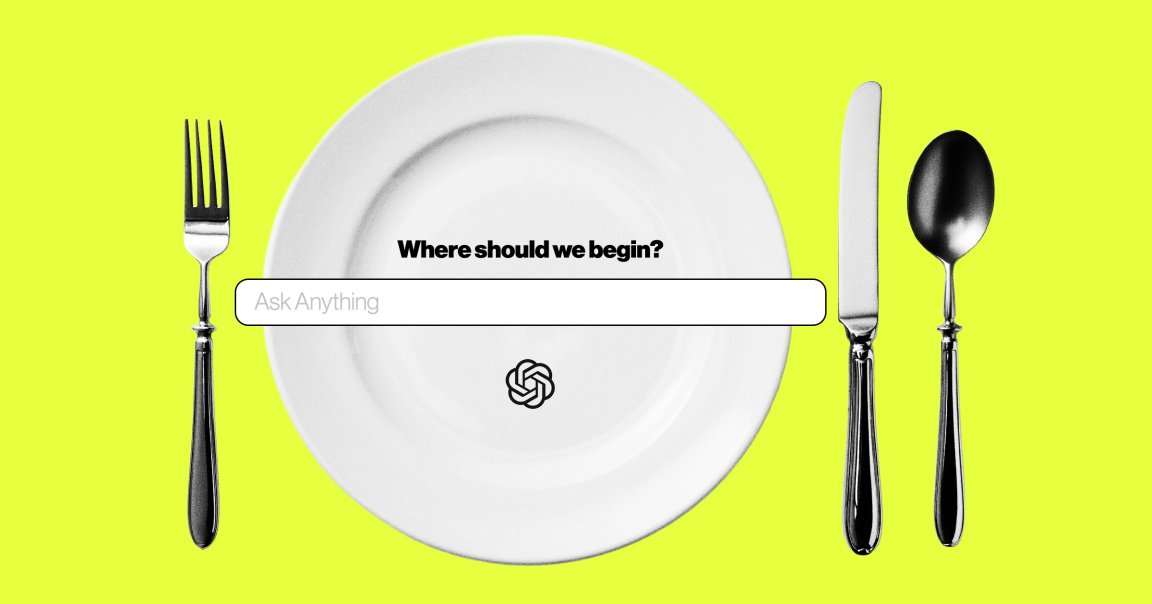
Ethos seemed like one of Austin’s hottest restaurants back in 2024. The eatery rose to prominence in October as tens of thousands of followers flocked to its Instagram page, a showcase of lustrous dishes such as the crustless pizza ball and the eye-grabbing dust mite bread loaf.
There was only one small problem: Ethos only existed on Instagram, and its seemingly impossible bites were really just AI slop. Though the intentions behind the bizarre social media stunt remain a mystery, Ethos was a huge red flag, cautioning us on the slow creep of AI into the food and beverage industry.
If it was intended as a warning, it was a prescient one. Over the months following Ethos’ viral blowup, many in the restaurant industry have turned to large language model (LLM) software to roll out surge pricing, robo-marketing, employee surveillance, and kitchen automation to their eateries — all in the name of saving a buck.
Consider the award-winning chef Grant Achatz, who’s turning to AI to do the creative task most cooks only dream of: creating the recipes for his restaurant menu.
According to a new piece of tech stenography in the New York Times, Achatz — several-time winner of the food industry’s prestigious James Beard award — is now using ChatGPT to churn out recipes for a nine-course meal at his Michelin-starred Chicago restaurant, Next.
The restaurateur tasked ChatGPT with taking on the role of a different imagined chef for each course, each of whom draws from an emaciated slurry of real life culinary masters to provide inspiration for their “dish.” For example, the NYT lists Jill, a “33-year-old woman from Wisconsin” who “trained” under the likes of Ferran Adrià, Jiro Ono, and Auguste Escoffier, as one of the AI creations.
Achatz then instructed the chatbot to spit up recipes that “would reflect her personal and professional influences,” which is a cutesy way to say “bastardize the work of some of the best craftsmen who’ve ever lived for a stunt.”
Case in point, Achatz told the newspaper that “I want it to do as much as possible, short of actually preparing it.”
While the celebrity chef and his cheerleaders at the New York Times — the piece, notably, carries the byline of the paper’s former restaurant critic Pete Wells — may be impressed with themselves, many on social media find the idea revolting.
“What an insult to Ferran Adrià, Jiro Ono, and the many talented chefs who work for Achatz that have actual experience that could be reflected in a dish,” wrote one poster on Bluesky.
“They should really headline it ‘Grant Achatz is out of the ideas that make people pay $1,000 for dinner, is outsourcing his work to AI,'” quipped Sarah Orsborn, a veteran pastry chef based out of Denver.
Achatz may have the final word on what leaves his kitchen, but the decision reads as particularly tasteless while many creatives and craftsworkers struggle against the widespread embrace of AI for creative labor.
As recently as September 2024 NPR reported that AI was generating recipes that could kill you if ingested — even as tech companies ripped off the work of real life cooks to train their chatbots.
In the present day, ChatGPT is still generating recipes like “burnt lettuce soup,” which involves “boiling lettuce for 30 minutes before broiling it at 500 degrees,” observed food critic Morgan Wujkowski.
AI “lacks common sense and culinary experience,” she wrote. “It follows algorithms, not tastebuds. Often times, the results that are generated are at best, incomplete, and at worst, faulty data.”
“Human creativity and intuition are paramount in recipe development, and it’s the one major flaw in using AI to generate recipes,” Wujkowski continued. “AI can assist in meal planning and macros, but actual human taste testing is irreplaceable. “
More on AI: After Disastrous Experiments Into AI, Target Pledges to Pile on Even More AI